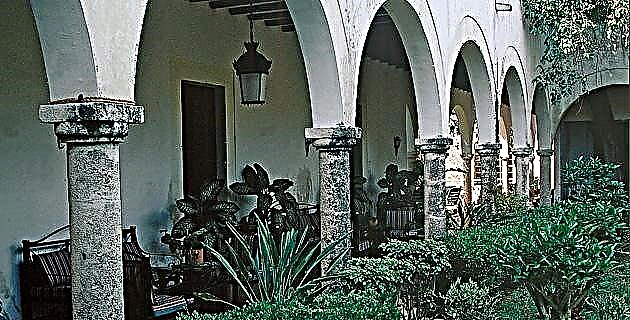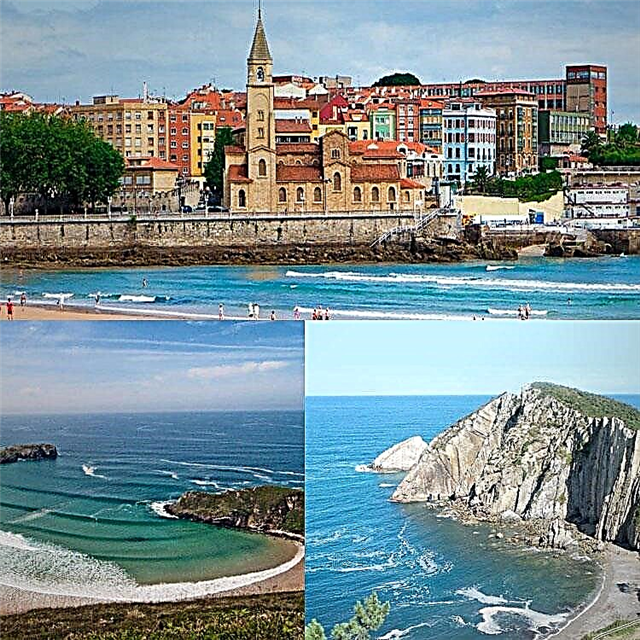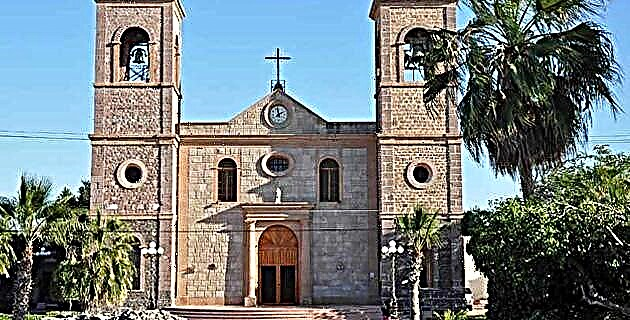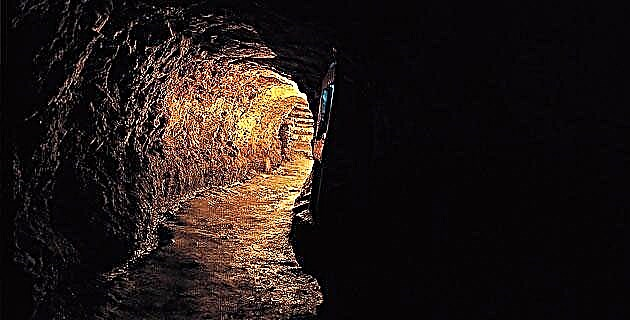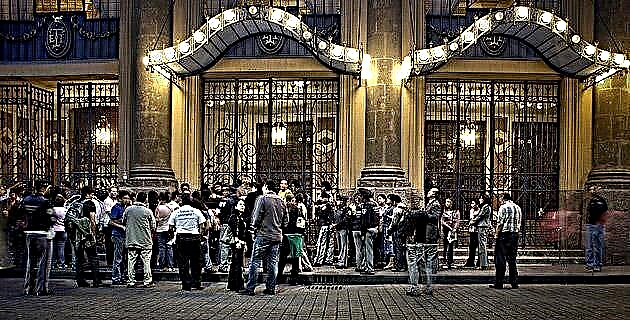
If you, the reader, are under thirty years of age, it would be extremely difficult, or almost impossible, for you to consider how there were actors, actresses and singers who in the 1930s made their presentations on stage without a microphone.
And I am not referring only to the theatrical buildings that by their very nature have acoustics perfectly studied for the human voice, but to the large spaces equipped for theatrical functions, such as a bullring or a stadium, the same as the actors, in addition to cramming them audience, filled completely with their voice without the need for electronic subterfuge. This paste of artists existed until before the 1950s and adorned the works that were represented in the forums of Mexico.
One such stage, perhaps the first, was the Esperanza Iris Theater. Indeed, from the date of its inauguration on May 25, 1918, it turned out to be the theater with the highest aesthetic and social hierarchy of all those then there were in Mexico City.
The Esperanza Iris arose from the remains of another theater: the Xicoténcatl, which was completely demolished to leave the site ready for the construction of the Iris.
The Xicoténcatl was born between 1914 and 1915 with a bad star. By raising it, it had been decreed that its existence was to be conditioned; Most of the walls were made of wood and the capacity reached 1,500 spectators, factors that, added to its proximity to the Chamber of Deputies, caused that collegiate body to decree: “… .if it is noticed that noises are produced annoying for the holding of the sessions of the former and the work of any of its departments, no license for functions and rehearsals will be given at times when the work of the Chamber is impaired.
Therefore, the Xicoténcatl did not prosper. Later, Mrs. Esperanza Iris bought the premises. The building was completely demolished and the new Esperanza Iris Theater was built from the ground up. The first stone was laid on May 15, 1917 and the works were directed by the architects Federico Mariscal and Ignacio Capetillo Servín.
Meanwhile, Doña Esperanza continued with her tours abroad. She had married at the age of 15 with the director of the Teatro Principal, the Cuban Miguel Gutiérrez, when he was working with the Moriones sisters' company. Upon returning from her first trip to Spain, she bought the Ideal Theater, became widowed and remarried with the baritone Juan Palmer.
Due to her mismanagement, Esperanza Iris lost the Ideal, and showing signs of uncompromising tenacity, she began the construction of the theater that would replace the Xicoténcatl. The building was conceived with the greatest technological advances of the moment and it was even designed in such a way that, after the last night show, the lunetarium furniture was removed and the venue was transformed into the Las Mil y Una Nights cabaret.
The Democrat, self-named "Free newspaper of the morning", refers to the inauguration of the Theater which took place on May 25, 1918: "This premiere of the Esperanza Iris Theater constituted the crystallization of the dream of a Mexican artist who not only his homeland, but in distant lands, has managed to conquer fresh roses of triumph for his crown of elegant and cordial divette ... At eight fifty minutes we got up from our armchair, listening to the warlike notes of the National Anthem, executed on the arrival of the Mr. President of the Republic, Don Venustiano Carranza ... Fired up, the gentle Esperanza Iris crossed the central corridor of the room and, taking the stage, opened the gigantic velvety wings of the curtain that, amid the salvo of a large unanimous ovation, discovered the group of workers, who, represented by the engineer Federico Mariscal, paid their admiring homage to a compatriot divette ... Visibly moved, Esperanza Iris blessed Di for the consummation of his noble wish, pronouncing affectionate phrases for the Mexican public and expressing his respectful gratitude to the president for both his gifts and the honor of his attendance ...
Almost with tears that filled her eyes, the gentle artist ended with a cordial hug to her partner in artistic struggles, Josefina Peral, and in a friendly exaltation to her collaborators Juan Palmer and maestro Mario Sánchez ... It would be impossible to give the names of the personalities political and social that attended the inauguration of the beautiful coliseum ... We close this reporter note with our warmest congratulations to our divette, for her achieved and crystallized triumph ... "
From this moment on, a noble rivalry arose between the cathedral of the operetta "(the Iris) and" the cathedral of the tandas "(Principal's magazines). On one stage, Iris, Palmer, Zuffoli and even Pertini, Titta Schippa, Hipólito Lázaro and Enrico Caruso; in the other, María Conesa, Lupe Rivas Cacho, Celia Montalván, Cuatezón Beristáin, Polo Ortín and “Panzón” Roberto Soto.
And what to say about the songs and the songs that the audience hummed at one place or another: Fru-frú del travarán, Divine Nymph, the Duo of umbrellas, I am the duck and you are the leg; Blessed is he who has his house afloat and others, in front of: My dear captain, Ana, The white kitten, El morrongo. However, time would cause the antipodal stars to meet on more than one occasion, as happened during the November 1937 season, at the Abreu Theater, in which the great Night of Glory was presented, among others.
The Iris Theater moved on. Between 1918 and the 1940s, an infinity of artists paraded through its stage, all of the first magnitude. It can be said that this stage of history includes two moments of post-international wars that will give Mexico the substantial elements to become a modern nation.
Hence, along with European-style shows - such as operas, comedies and operettas - works of Mexican manufacture of criticism or nationalist exaltation were exhibited, light in many cases. These are the musical magazines that in the future would become the "varieties" used for the radio, the cinematograph and, to this day, as schematics for some television programs. Due to this condition, central characters, vernacular types and contexts where the arguments are developed, will be reinterpreted through the years.
From another angle, the zarzuela is a genre that was born to the aristocracy, but is adopted by the people and becomes the expression of Spanish vernacular songs, dances and dramas. This is how a show that had Greek mythology as its theme (in the middle of the 18th century) would be transformed into a regionalist setting (from the 19th century). In Buenos Aires the zarzuela became a porteño sainete, in Cuba, in the Creole musical magazine or of the Havana buffs and in our country, in Mexican zarzuela that would later lead to the musical magazine and varieties.
Indeed, the unparalleled Spanish zarzuela La verbena de la Paloma represents a party in Madrid in those years, and if the imagination starts running, it is not difficult to conclude that during its premiere on February 17, 1894, surely not It would have been possible to differentiate where the audience was and where the actors were if the scenic limits were not mediated. And so it happened with the Mexican zarzuela and with the musical magazine. He had such rapport with the parishioners of Mexico City that it was used and manipulated to guide the currents of opinion over the years. twenty. Every week a new one was premiered with different music: nationalist, "bataclanesque", in the manner of Parisian shows - with all legs in the air; -Hey, my Celia Montalván! -, "Psicalíptica" -with the best of high school albures and cramps and without leperada-, or love stories that culminate with the romanticism of Agustín Lara and Guty Cárdenas in the now defunct Politeama Theater. This popular show in all its dimensions will be the raw material for the birth of commercial radio and for the first steps of the national cinematographer.
The structure of the radio, theatrical, cinematographic and television representations is indebted to figures such as Esperanza Iris, Virginia Fábregas, María Conesa, Lupe Rivas Cacho, Cuatezón Beristáin, Muro Soto Rangel, Roberto “Panzón” Soto, Mario Esteves, Manolo Noriega , Víctor Torres, Alberto Catalá and so many actors and actresses who went to school. It is a source of true joy that even today there are personalities in the theatrical world willing to put on zarzuelas and other shows of this court, in the style of yesteryear and that they dedicate themselves to rescuing the names and values of the personalities that have left their mark on the history of Mexican music and performing arts. Thank you Iran Eory and thank you teacher Enrique Alonso!
Source: Mexico in Time No. 23. March-April 1998
Antonio Zedillo Castillo


